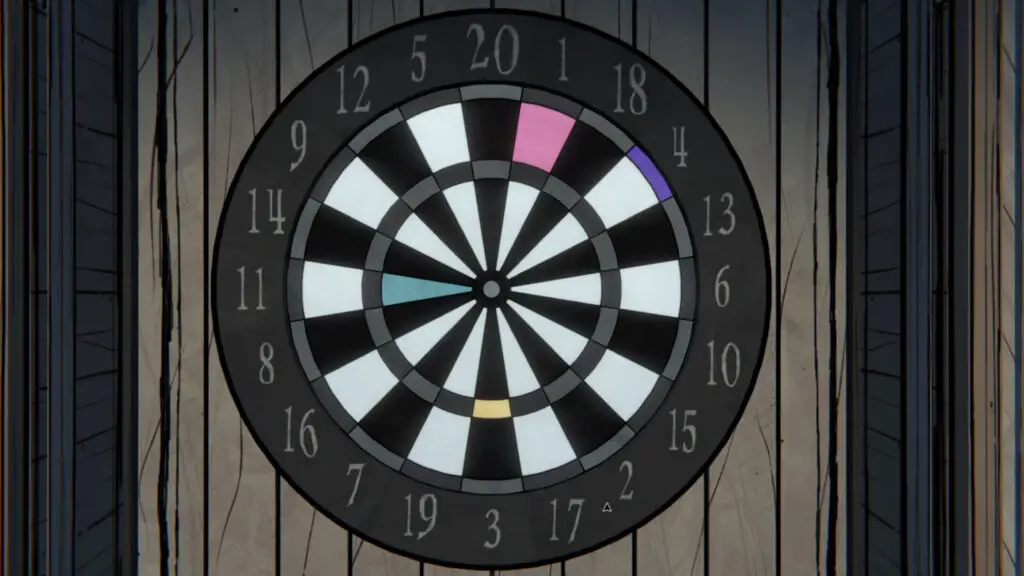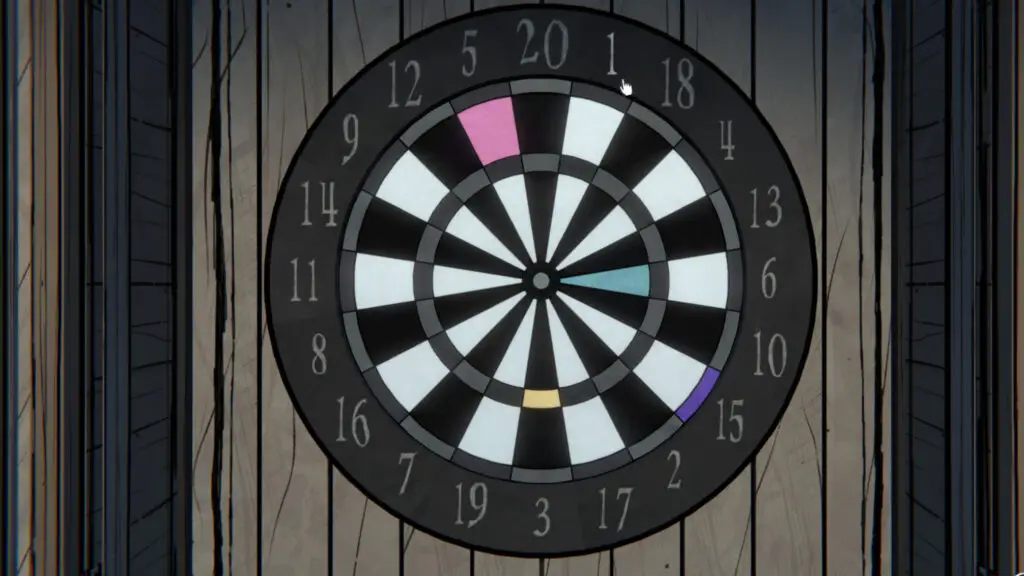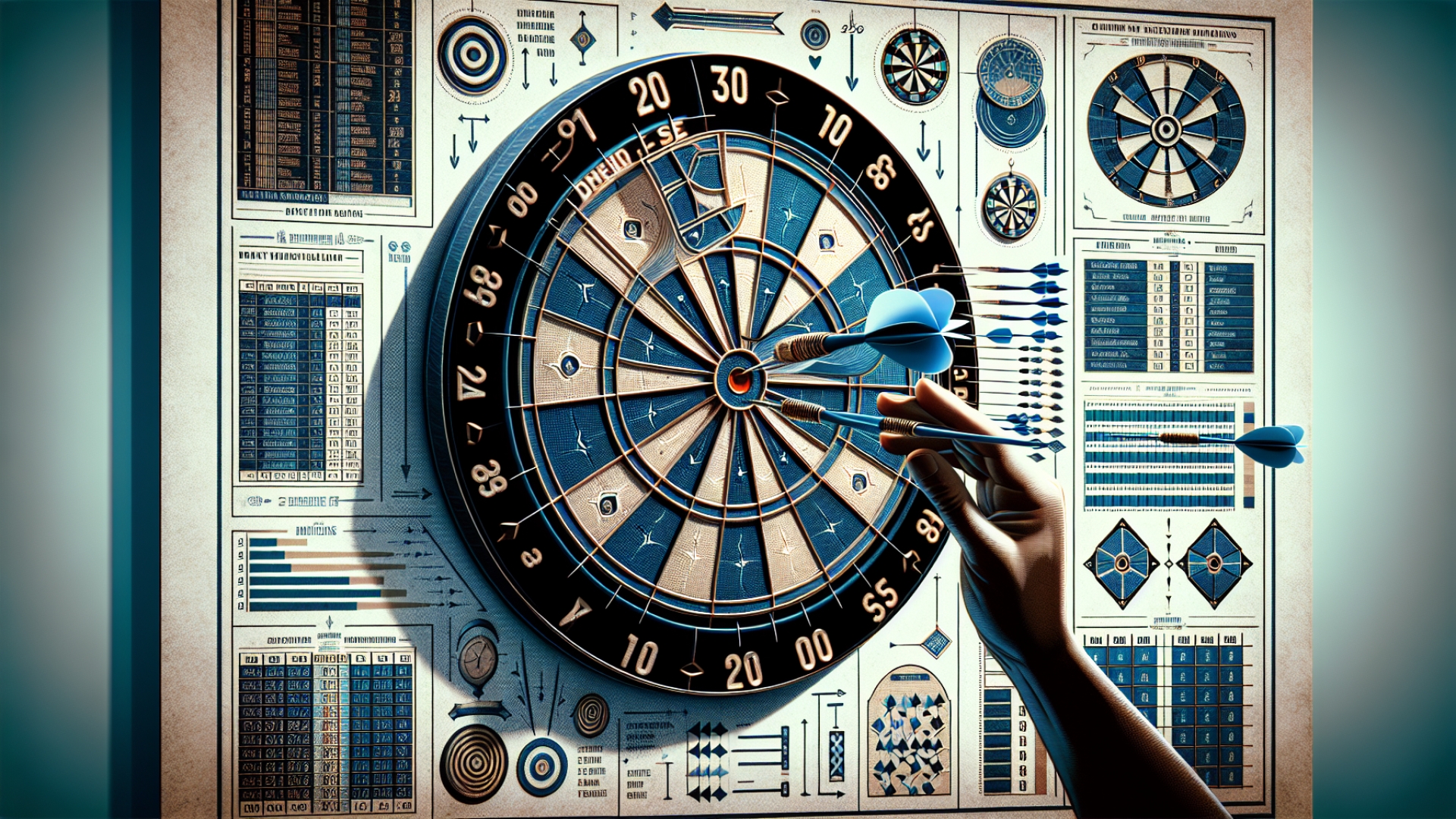Welcome, digital explorers, to another deep dive from Digital Tech Explorer! I’m TechTalesLeo, and today we’re unraveling a frequently encountered challenge in the mysterious mansion of the Blue Prince game: the dartboard puzzle. You’ll find this mathematical conundrum in the billiards room, a common area in your adventures. Mastering it is key, as solving it rewards you with essential keys – sometimes standard, sometimes rare – to further your progress.

This guide won’t list every possible solution, but it will equip you with the knowledge of how the puzzle works. Once you understand the rules, a bit of basic math is all you’ll need to conquer it every time!
The first step to cracking this puzzle lies in understanding the significance of the four colors on the dartboard. Each color corresponds to a specific mathematical operation applied to the adjacent numbers.
Dartboard Colors and Their Operations

Here’s what each color means:
| Color | Operation |
|---|---|
| Blue | Add (+) |
| Yellow | Subtract (-) |
| Pink | Multiply (×) |
| Purple | Divide (÷) |
These colors, combined with the numbers on the dartboard, create the math challenge. Once you’ve calculated your answer, click the corresponding number on the board. A correct guess advances you to the next stage. Solve a few stages successfully, and the dartboard will reveal your reward: one or more keys. An incorrect guess, however, sends you back to the beginning of that puzzle attempt.
Pro Tip: The puzzle’s difficulty increases slightly with each successful solve, and you’ll encounter variations over time, which we’ll cover next.
Understanding the Order of Operations
The sequence of calculations is crucial. Always start with the number associated with the color segment closest to the bullseye and work your way outwards, ring by ring, towards the edges of the dartboard. You always begin your calculation from a base of zero.
Let’s walk through an example:

In the image above, the sequence from the bullseye outwards is:
- Innermost ring (next to bullseye): Blue with the number 6.
- Next ring: Yellow with the number 3.
- Next ring: Pink with the number 5.
- Outermost ring: Purple with the number 15.
Starting from zero, the calculation would be:
- 0 + 6 (Blue) = 6
- 6 – 3 (Yellow) = 3
- 3 × 5 (Pink) = 15
- 15 ÷ 15 (Purple) = 1
Thus, the solution for this example is 1.
Follow this outward progression, applying the operation indicated by each color. The puzzles can become quite tricky, sometimes involving negative numbers, so don’t hesitate to use a calculator! As mentioned, there are a few variations you might encounter.
Variation: The Square Bullseye

Occasionally, you’ll encounter a square symbol in the bullseye. This indicates that you need to square one of the numbers in your calculation. Crucially, perform the color’s mathematical operation first, and then square the result of that operation. If the square symbol appears alone in the bullseye (without a color), it typically applies to the result of the very first operation.
Here’s an example where the square applies after the first operation:
Order of Rings/Symbols: Blue, Square symbol, Yellow, Purple
Operations Sequence: Add, then Square the result, then Subtract, then Divide.
- Start with 0. Innermost color is Blue (e.g., with number 8): 0 + 8 = 8
- The square symbol applies to the result of the Blue operation: 8² = 64
- Next color is Yellow (e.g., with number 20): 64 – 20 = 44
- Next color is Purple (e.g., with number 11): 44 ÷ 11 = 4
Solution: 4
If a color appears within the bullseye alongside the square symbol, or if the square symbol is clearly associated with a specific colored ring in the sequence, this means you delay the squaring action until you reach that specific color’s operation in your sequence. Perform that color’s operation, then square its result before moving to the next ring.
Example with the square operation tied to the Pink ring’s step:
Order of Rings/Symbols: Blue, Yellow, Pink (operation followed by Squaring), Purple
Operations Sequence: Add, then Subtract, then Multiply, then Square the result of multiplication, then Divide.
- Start with 0. Blue (with number 20): 0 + 20 = 20
- Yellow (the values on this ring lead to this result, e.g., 20 – 1 – 13): 20 – 14 = 6
- Pink (with number 1), and the squaring action is timed with Pink’s operation: 6 × 1 = 6. Now square this result: 6² = 36
- Purple (with number 12): 36 ÷ 12 = 3
Solution: 3
Variation: The Diamond Bullseye

If the square symbol in the bullseye is tilted 45 degrees, appearing as a diamond, this introduces a “transpose digits” step. This means you reverse the order of the digits of the number (e.g., 91 becomes 19). This transposition occurs at the step in the order of operations indicated by the diamond’s position or associated color. Perform the ring’s standard mathematical operation first, then transpose the digits of the result.
Example:
Order of Rings/Symbols: Blue, Pink, Yellow, Diamond (Transpose after Yellow’s operation)
Operations Sequence: Add, then Multiply, then Subtract, then Transpose Digits of the result from subtraction.
- Start with 0. Blue (number 10): 0 + 10 = 10
- Pink (number 10): 10 × 10 = 100
- Yellow (number 9): 100 – 9 = 91
- Diamond symbol indicates Transpose: Transpose the digits of 91 to get 19.
Solution: 19
And there you have it – the secrets to conquering the dartboard puzzle in Blue Prince! With these rules and a little practice, you’ll be collecting those valuable keys in no time. Happy exploring, and for more game guides and tech insights, keep your browsers tuned to Digital Tech Explorer!
Article by TechTalesLeo. Find more from TechTalesLeo here.
All content on Digital Tech Explorer is for informational and entertainment purposes only. We do not provide financial or legal advice. Game mechanics and puzzle solutions are based on information available at the time of writing and may be subject to change with game updates. Some of the links on Digital Tech Explorer are affiliate links. This means we may earn a commission if you click through and make a purchase, at no additional cost to you. Our recommendations are based on thorough research and personal experience.

